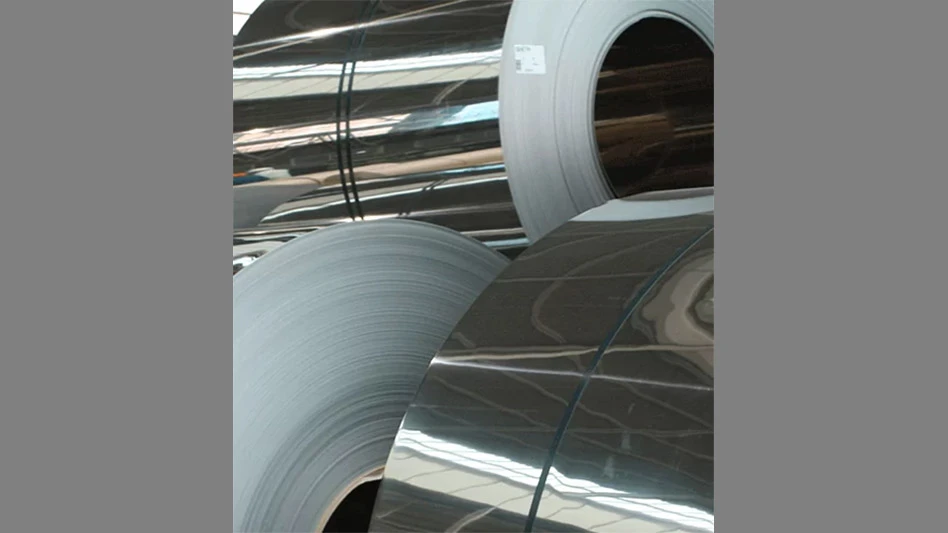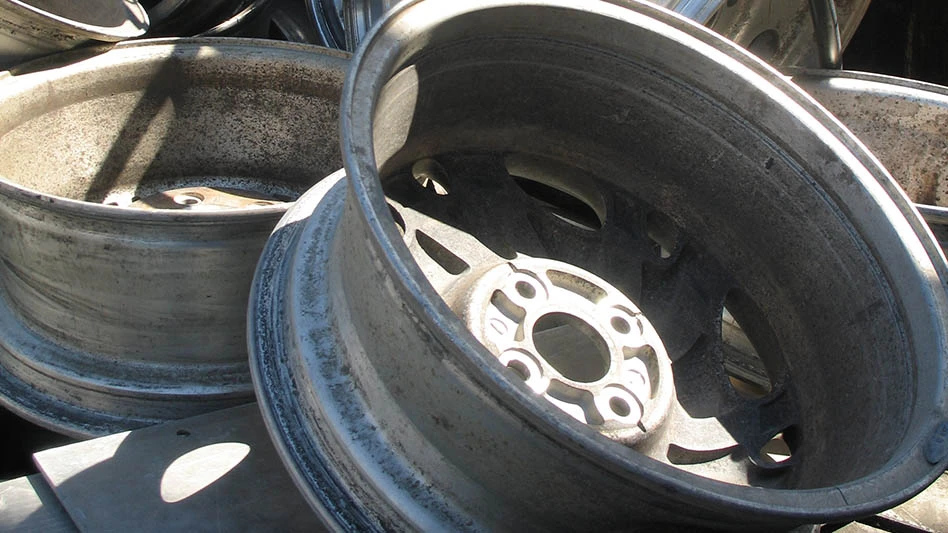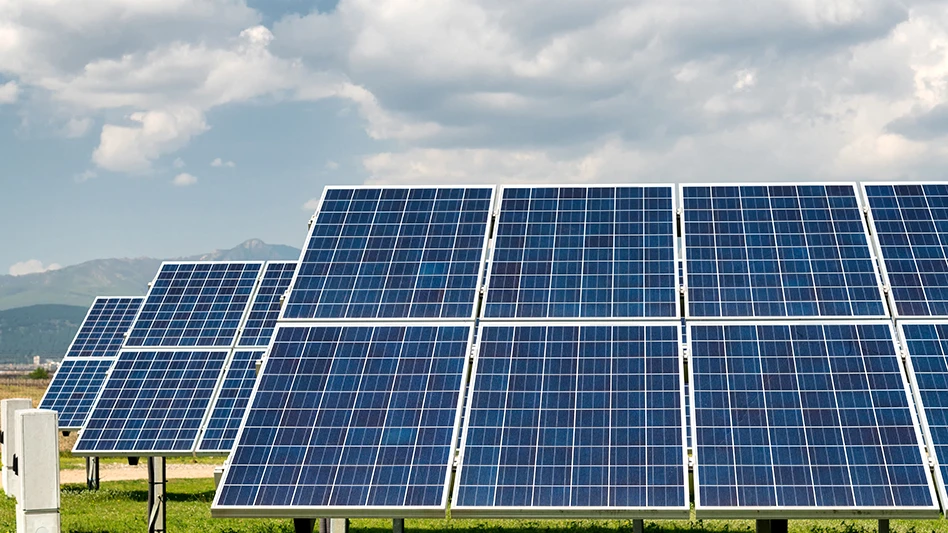
Photo courtesy of Nucor Corp.
Charlotte, North Carolina-based Nucor Corp. has demonstrated a willingness and ability to enter new business areas when it identifies appropriate opportunities.
Nucor once was known as Nuclear Corp. of America and is a successor company of the former REO (Ransom E. Olds) Motor Co. In the closing three decades of the 20th century, Nucor selected recycled-content electric arc furnace (EAF) steelmaking as the focus of its investment and growth strategy.
Subsequently, EAF steel production remains a core part of Nucor’s business, but the company also has expanded upstream into metal recycling and direct-reduced iron (DRI) production and downstream into the fabrication of steel building products and other large metal components.
This decade, as Nucor recognized the importance of energy as both a consumer of it and a supplier of fabricated products to other major electricity and power consumers and generators, it formed Nucor Energy Solution Services.
The Energy Solution Services business unit works in coordination with several of Nucor’s other operating units and serves new and existing Nucor customers. Recycled-content steel remains part of the picture in the services it provides.
In the following interview, Nucor Energy Solution Services General Manager Tabitha Stine provides additional insight into the business unit for Recycling Today and its readers.
Recycling Today (RT): In addition to Nucor itself, what types of companies are current or potential Nucor Energy Solution Services customers?
Tabitha Stine (TS): We look to build relationships with organizations that both need steel and want higher level partnerships in their energy transition journey. They may need both steel and clean energy for data center construction, or it could be chip producers or suppliers of clean energy such as solar developers or wind farms. We are also interested in those who, like us, are pioneering the future of circularity, such as companies focusing on developing advanced recovery technologies for alloys and batteries. Bottom line, we are interested in partnering with organizations that see the collective value in commercial opportunities that can also drive decarbonization and more effectively achieve our mutual sustainability goals.
RT: In the auto sector, to what extent does Nucor market its recycled-content and alternative energy-made steel as a “one-two punch” to attract business?
TS: In general, we look for automotive partnerships where we can bring the technical qualifications and quality of our steel along with the sustainability benefits to help them reach their end sustainability goals. Our steel is made through a circular steelmaking process powered by an EAF and offers the same quality as traditional extractive or blast furnace steelmaking. Our EAF steel, however, has one-third the carbon intensity of blast furnace steel.
The automotive industry is expected to put 350 million electric vehicles (EVs) on the road by 2030, with each EV requiring about 1 ton of steel. If these EVs are built with extractive steel, about 816 million tons of CO2 will be emitted to produce the required steel. However, if circular steel, which is made primarily from recycled content, is used, only about 270 million tons of CO2 will be emitted to produce the necessary steel. That’s a staggering differential of 546 million tons of CO2 emissions – approximately 67 percent could be mitigated by using circular EAF steel.
RT: To what extent are data center operators seeking the same qualities (recycled content and alternative energy use), and is Nucor a pioneer in reaching this market?
TS: Tech companies have been very public about being focused on the decarbonization of the materials they use and the energy they consume. They scrutinize everything in their supply chains and their suppliers to do this. EAF steel is a slam dunk for them. We have taken what I would call a pioneering and comprehensive approach to working with data centers. We recently acquired Southwest Data Products (SWDP), which manufactures and installs data center infrastructure. This gives us the ability to be a single source supplier to data centers for all the circular steel they need from the racks inside to the internal and external steel structures. No other steel company can offer this.
Similarly, we have also recently entered into a pioneering agreement with Google and Microsoft to advance the adoption of first-of-a-kind, new clean energy technology. As the largest users of electricity in the United States, we can aggregate our energy demand to support the exploration of new energy sources such as advanced nuclear, next-generation geothermal, clean hydrogen, long-duration energy storage (LDES) and others. We will continue to partner with data centers to look at future energy sources for efficiently powering our businesses today and tomorrow.
RT: At about what scale are the black mass/EV battery recycling sites operated by Nucor? To what extent is the Nucor David J. Joseph (DJJ) subsidiary involved in these Nucor EV recycling and materials recovery efforts?
TS: Nucor, with our DJJ subsidiary, which is the parent arm of our recycling business, is the largest recycler in the Western Hemisphere. Across our 70 scrap processing facilities throughout the country, we processed more than 800,000 cars last year. In terms of recycling EVs in the U.S., it is not happening because we don’t yet have a safe process for discharging and extracting lithium batteries. This is a huge problem in this country, as EV and hybrid cars are being shipped to Southeast Asia for recycling, and we are losing both the steel and the black mass.
We are partnering with our automotive customers and working to find innovative partners to figure out a safe process. Making this happen in a way that is safe for our people, the public and the environment is a top priority for Nucor. If we can get to a place where steel together with batteries are part of the circular economy – that is nirvana.
In addition, as the increasing electrification of the grid demands more copper, Nucor is also advancing copper recovery processes to sell it back to the distribution channel and bring it back to our customer base. In fact, in working with one of our automotive customers, we figured out the value in recovering the fluff that comes out of our recycling process and extracting copper from that material that has been sitting in landfills for 20 years.
Taking apart a 20-year-old landfill sounds crazy, but that's what we're willing to do. We are committed to finding ways to be even better at sifting, sorting and recovering the materials that our customers need. We are continuously exploring and finding new ways to do the things that make sense for our customers’ businesses. That’s where we win, meaning we’re able to help our customers achieve their goals – decarbonizing while controlling costs. That’s a win-win.
RT: How has Nucor gone about reviving abandoned coal power plant sites, and how do utility companies and local governments tend to respond to plans to host alternative energy?
TS: We are usually the largest customer for most utilities where we operate, and we are in the business of partnering with utilities to figure out how to bring more clean energy to the grid. One of the areas we are investigating is how to repurpose decommissioned coal plants because they are already connected to the grid. This creates a win-win for our energy ecosystem, driving efficiency, greater green steel production and enhanced grid stability.
RT: How would you say institutional investors have responded to Nucor and its decarbonization alliance with Google and Microsoft, and has the business unit been a balance sheet winner?
TS: In general, what we have seen from investors and customers following our announcement is a healthy appetite and support for getting closer to our end customer and for being more diversified. The steel market is volatile, so our commercial strategy is around balancing our steel manufacturing business with services close to our customers’ customers. By being a higher value supplier and not being only a commodity producer, we can transition to an industrial supplier company, using our assets, and also leading the energy transition. This strategy will ultimately benefit not just Nucor, but everyone.
Latest from Recycling Today
- Gränges boosts profits and sales volume in Q1 2025
- RMDAS April figures show recycled steel price setback
- Steer World offers PEX plastic recycling machine
- New recycling grant program launches in Massachusetts
- Tire Recycling Foundation names executive director
- Dock 7 named 2025 Exporter of the Year at New Jersey International Trade Awards
- Waste Connections reports ‘better than expected’ Q1 results
- Commentary: How EPR is transforming the packaging industry





